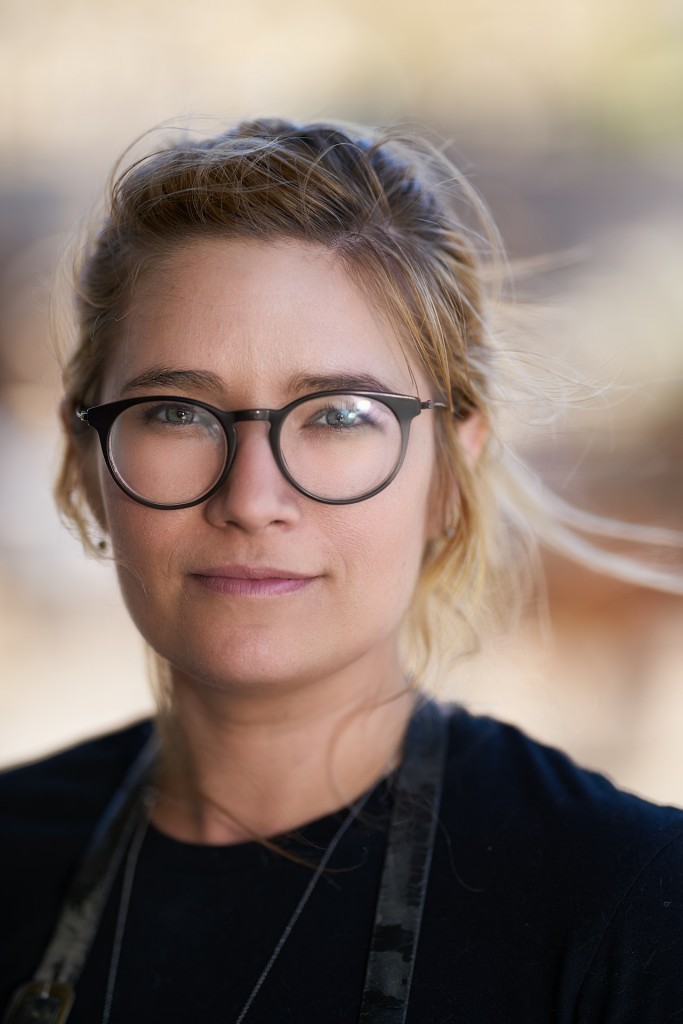
Last winter (South Africa’s summer), I encountered Erika Wessels and her beautifully unique and contemporary handmade jewelry at the Old Biscuit Mill in Cape Town. Erika’s design aesthetic, as evidenced by her combination of stones and liberal use of dark metals, is both fresh and timeless. I spent an eternity with her designs and finally chose a sculptural cup ring set with obsidian. The silver around the stone is bright while the cup setting and ring are oxidized, which complement the dark color of the stone and the hefty proportions of the ring perfectly.
I’ve been told that obsidian, a kind of volcanic glass, has grounding and protective properties. Perhaps that is true—but all I know is that when I wear this ring, I feel like I could defend myself if I needed to, and it garners a lot of compliments. And when I don’t wear the ring, I miss its smooth weightiness.
Our jewelry can speak volumes with its materials, and its proportions in relation to our bodies, and how we wear it: how we put looks together around it. Sometimes jewelry is the focal point; sometimes it’s the thing we never take off. Erika’s work is effortlessly cool in that it’s not too precious in every sense of the word, from the design sensibility to the mix of stones and metals. These are pieces that could be worn every day and for an occasion as well. They’re versatile, modern, and individual.
Erika founded Erika Wessels Jewellery five years ago when she moved to Cape Town. “You’ve got the mountains, the ocean, the city, the vibe, and the people. It’s just the most beautiful city. It’s a special place.” The silver she uses in her designs is locally sourced and mined in South Africa, and the stones come from all over the world. Though the stones are not necessarily local, the jewelry is imbued with the spirit and energy of the stunning environs. As Erika is very much inspired by her materials, it is fitting that she has chosen a place renowned for its natural beauty to be her home.
Can you tell me a little bit about how you got into designing and making jewelry?
Well, it’s been quite a journey. I went to art school. Actually I made my first ring while in school. I did a jewelry lesson with a friend’s mother, who hosted jewelry lessons for afterhours. I made a ring there and I loved it. After high school I studied visual communication, but it wasn’t for me—sitting in front of a computer all day. I needed to work with my hands so I did a very casual course [in jewelry]. I loved it, so then I went to University of Johannesburg and did a three-year course: jewelry design and manufacturing. After which I worked in retail for two years and then I worked for Liz Loubser. I didn’t manufacture jewelry; I was designing engagement rings and sourcing diamonds, answering emails and stuff like that. Five years ago, I moved to Cape Town and started this business. I literally just sat down at a bench and started making jewelry and it’s grown from little pierced animal pendants to what I’m doing now.
Have you always worked with oxidizing your metals or is that a newer technique?
No, it’s not a new thing; I have always liked oxidizing everything. I have to try and hold myself back sometimes—sometimes you should just let the piece be silver; but then, darkening the metal makes a thing pop, especially when it comes to things like pearls. I was never drawn to pearls until I worked for Read’s Gallery where I developed an understanding of pearls; I like them a lot now. Also, I would string them with black or blue silk—the colored knotting makes them more exciting.
Are there any types of stones that you favor or use often in your work?
I love black spinel, and would use it in 75% of my pieces if I could. I’m also a big fan of the rutile quartz [and] corundum because of its marvelous luster. I like vibrant colored stones too, like green onyx, yellow sapphire, and bright pink rubies. I’m drawn to well-cut “bad” quality stones (I mean murky and heavily included stones) because I find them interesting.
Would you say you have a consistent creative process when you’re developing your jewelry?
Most of the time, I sit down with my stones and play around with [them] until I find a nice picture. Then I make a drawing and [go] to the bench, but a lot of the time in the manufacturing process things can change. I can go, ‘Ooh, actually this would be better if I bring this over here.’ [Often] it is planned before I even go to the bench but the stones just dictate what I’m going to do, most of the time.
It has happened before that I just wake up with an idea and then go and get stones. Or while doodling—so sometimes the process just happens effortlessly and sometimes it happens by developing an idea.
Your pieces do seem like drawings. The gems aren’t right on top of each other; they’re not clustered, they’re constellations. You’re exploring the space and not everything is symmetrical.
There is a balance. I like odd pairs and I like things to be a bit off, but balanced. Like with the odd earrings, it makes sense to me. It doesn’t have to be the same, but there is the same language and the same feel in a different composition. So yes, I am aware. It’s considered. But also, it comes naturally. I don’t overthink a piece—it just comes. And it’s not for everyone. A lot of the time, people don’t get it and that’s okay.
There’s a sort of thread through your work, something about a contradiction. For example, you spoke about wanting the pearls to have a contrast with the oxidized silver or a dark thread. There’s something precious about the gems…
Yeah, the gems are precious, and by using darkened silver it becomes almost industrial looking. I like contrasting “fancy” and “casual,” and by stringing “sweet and soft” pearls on green silk, it brings it out of the stereotypical realm of pearls and takes it somewhere more relatable and fun.
Is there another thing that you do that feeds into this?
Yes, with my display building, like the earring stands. It’s like functional art, basically. It becomes one piece almost: the little face [of the stand] and the earrings become the eyes. It becomes a little installation; you can have it on your dressing table and when you take off the earrings [and put them on the stand] it makes a picture, which is fun. Because with something like earrings, I feel you never get to enjoy your earrings when you wear them because they become a part of your face. Other people see them. But a ring or a bracelet or whatever is for you because you get to enjoy it. Earrings you never get to enjoy, so that’s a problem. That’s where the stands came in. This was the evolution of my thinking; I really started making my own stands because I couldn’t find nice ones ready made.
Do you find your jewelry has changed?
There were four years when I didn’t make jewelry at all. After my studies I didn’t think I was going to be a jeweler; I thought I was just going to work in the industry, but as a designer or promoter, not as a manufacturing jeweler. Then I got really frustrated. I was selling other people’s jewelry, curating and whatever, but I had my own ideas and I needed an outlet. So I had to take the leap, quit the job, and move down here and start my own thing. It evolved quite a bit in the last five years, because when I started, I didn’t have a clear vision of what I was going to do. I just kind of hit the ground running and started making one thing after the other thing, and then it grew from there. And now I would say that I know my visual language; I’m quite comfortable with this aesthetic of mine.
So when you look at the first ring you made or the pieces you were making in university, is it clear to you that it’s still the same person making them?
Yeah, definitely, it has evolved a lot (and will keep evolving) but there is a [continuity]. Like the cube and the interlinked cubes, for instance—that’s something I did in varsity. I started doing the cube [then] and I’m still doing it now. It’s not a one-off thing. I’ll carry on making those forever. And the odd-claw thing—when I set the stones with odd claws—that’s something I do a lot, but that happened here. I like it. That actually happened through a mistake. I made a pendant when I just started (after not touching a tool for four years, you can imagine I was a little rusty). I made the setting for the stone—it was white agate—and I made the setting too small. I thought, ‘But what if I put a claw on?’ I was looking at this vintage watch face on my pinboard and I thought, ‘Ooh, but what if I put the claws maybe at 2 o’clock, 3 o’clock, 7 o’clock, as opposed to having them symmetrical?’
It worked and so it’s something I’ve continued doing. A lot of the time, pieces evolve and new things come out of trying to fix “mistakes,” as opposed to just scratching it. You have to know when to let something go. But sometimes, rather trying to figure out how you can save it forces you to think in a different direction. It’s like problem solving basically, and then cool stuff happens.






0 thoughts on “Erika Wessels”